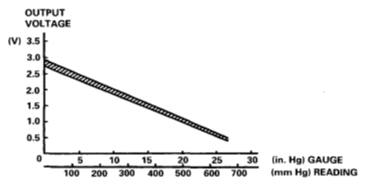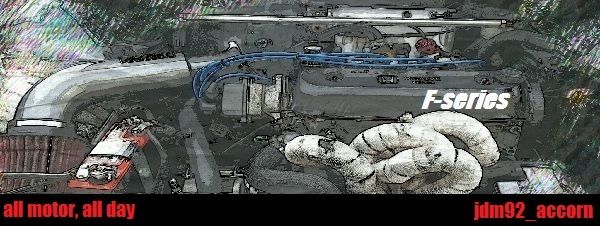Well this has to be done eventually, but I'm not sure where to start. I'm ok with the process taking a long time and I'm sure I'll still need a tuners expert advice now and then. I know a lot about cars but I just got into the turbo world last summer.
The other day I had my boost solenoid start making a lot of noise with the key on (ACC) and so I started reading and asking folks. The answer is that it was supposed to make this noise but if you have the duty cycle for it set to 0 or 100 it will stay off. The other answer was that it may have been doing it because my map sensor was unplugged. From what I understand this boost solenoid would be used for boost by gear scenarios or fail safe methods. But how this component interacts with the rest of the setup is something I do not know. Another example is boost cut. Last summer I was hitting boost cutoff. The tuner changed some things (duty cycle i believe) and problem was solved. But what he did or how he got rid of the boost cut but kept the car in safe turbo settings is beyond me.
Either way ........ it was obvious I had no idea how my turbo components worked with each other in terms of mechanical and software. I don't really understand the details of it and I'd like to know. Sure I know what a BOV is and can lookup connection diagrams, etc. but this is easy stuff. I've never connected my own laptop with Hondata software to see my maps. In fact I don't even know if I can pull the map from the ECU or if i need to get the file from my tuner who has it saved on his laptop. I imagine I can pull the file from the ECU as it is stored in EEPROM for the ECU to read it over and over.
But eventually I'd like to be able to troubleshoot my own turbo issues. I've read the Hondata manual, read items like Corky Bell - Maximum Boost, I've downloaded and opened the software, I've watch others tune and I get the idea but like programming code or learning french, it's one thing to be able to read it but a whole other thing to write it.
Any ideas on where to start...........?
The other day I had my boost solenoid start making a lot of noise with the key on (ACC) and so I started reading and asking folks. The answer is that it was supposed to make this noise but if you have the duty cycle for it set to 0 or 100 it will stay off. The other answer was that it may have been doing it because my map sensor was unplugged. From what I understand this boost solenoid would be used for boost by gear scenarios or fail safe methods. But how this component interacts with the rest of the setup is something I do not know. Another example is boost cut. Last summer I was hitting boost cutoff. The tuner changed some things (duty cycle i believe) and problem was solved. But what he did or how he got rid of the boost cut but kept the car in safe turbo settings is beyond me.
Either way ........ it was obvious I had no idea how my turbo components worked with each other in terms of mechanical and software. I don't really understand the details of it and I'd like to know. Sure I know what a BOV is and can lookup connection diagrams, etc. but this is easy stuff. I've never connected my own laptop with Hondata software to see my maps. In fact I don't even know if I can pull the map from the ECU or if i need to get the file from my tuner who has it saved on his laptop. I imagine I can pull the file from the ECU as it is stored in EEPROM for the ECU to read it over and over.
But eventually I'd like to be able to troubleshoot my own turbo issues. I've read the Hondata manual, read items like Corky Bell - Maximum Boost, I've downloaded and opened the software, I've watch others tune and I get the idea but like programming code or learning french, it's one thing to be able to read it but a whole other thing to write it.
Any ideas on where to start...........?




 . Solenoids usually have two states, on and off. The PWM is how it gets to all the in-between boosts.
. Solenoids usually have two states, on and off. The PWM is how it gets to all the in-between boosts.



Comment